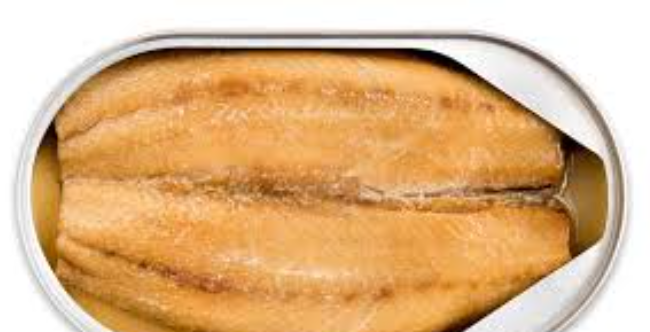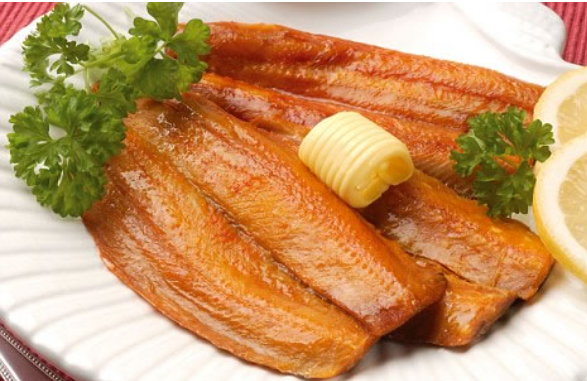Kippered Snacks Nutrition: Are These Smoked Treats Healthy for You?

Kippered snacks are likely comfortable to you if you’ve been looking for quick, tasty, rich in nutrients munchies. Often found inside cans or sealed with a vacuum packing, these somewhat was a smoker, retained chunks of fish are delicious taken straight from their package or tossed into toasted sandwiches and salads. Apart from the straightforwardness and smoky taste, though, how health-wise do kippered dishes stand?
Anything you want to find out concerning kippered snacks—including the manner in which you should incorporate them into your dietary regimen, how they’re defined, the vitamins and minerals they provide, and any possible negatives—will be covered in this post. Allow me to begin.
What Are Kippered Snacks, Exactly?
Fillets of fish preserved, salted this means split, or otherwise carefully smoked are kippered snacks. Along with preservation, the technique improves the taste of the fish. Although the adjective “kippered” is usually used to describe herring, among other it is also rather frequently used in the United States to refer to a broad spectrum of fish, which includes mackerel, salmon, and even the sardines
These snacks have been prepared to eat, stable on the shelf, and frequently come in little tins and pouches. They are popular among hikers, keto dieters, seafood lovers, and anybody else looking for a snack with plenty of protein which requires no refrigeration.
Kippered Snacks Nutrition Facts
The remarkable nutritional characteristics of kippered snacks is one among the primary causes of their growing popularity. Let’s examine the standard nutritional content of 85 milligrams (3 pounds) of kippered herring.
| Nutrient | Amount per 85g (3 oz) |
| Calories | ~180 kcal |
| Protein | ~20 grams |
| Total Fat | ~10 grams |
| – Saturated Fat | ~2 grams |
| – Omega-3 Fatty Acids | ~1,000-1,800 mg |
| Carbohydrates | 0 grams |
| Sodium | 300–450 mg |
| Cholesterol | ~60 mg |
| Vitamin D | ~300–500 IU |
| Vitamin B12 | ~9 mcg (375% DV) |
| Calcium | ~50–100 mg |
| Iron | ~1–2 mg |
Note: The brand, kind of fish, and preparation technique can all affect the precise values.
A Closer Look at Key Nutrients
• Protein: With roughly 20 grams of complete protein per serving, kippered snacks are an excellent source of satiety and muscle repair.
• Omega-3 Fatty Acids: These heart-healthy fats are among the primary advantages. They help with brain function, lower inflammation, and improve cholesterol.
• Vitamin D: Vitamin D is one of the few readily available natural food sources and is particularly important for strong bones and immune systems.
• Vitamin B12: This vitamin is essential for the production of red blood cells and the proper operation of neurons, and kippered snacks are a great source of it.
Kippered Snacks’ Health Benefits
Kippered snacks are not only tasty but also have some real health benefits. For the explanations further down, think about maintaining them in the cupboards.
1. High in Fats and Fats Omega-3
Kippered snacks are not only tasty but also have some real health benefits. Consider having them stored in your pantry for these particular causes:
reduce arterial cholesterol, cardiovascular risk, and improve cognitive function.
If you don’t consume fatty fish upon a daily basis, kippered snacks are an easy and quick method to boost daily omega-3 consumption.
2. Rich in Protein
Approximately 20 grams of protein of excellent quality are present in each meal. That goes beyond a glass of milk or an egg. Protein regulates your metabolism, aids in muscular growth, and leaves people feel full.
3. Low Carbohydrate (Keto-Friendly)
For anyone following a ketosis or low in carbs diet, kippered snacks are perfect. They are an excellent snack and will not affect your glucose levels because they have little to no carbs.
4. Packed with Micronutrients
In addition to vitamin D and B12, kippered snacks frequently include minerals such as calcium, iron, and selenium—all of which are necessary for healthy bones, an effective immune system, and energy generation.
Potential Health Concerns
Even though kippered snacks are high in nutrients, there are a few things to consider.
1. Too Much Sodium
The high salt content of smoked and preserved fish is one of its main drawbacks. 300–450 mg of salt (15–20% of the daily recommended range) are included in one serving.
Eat them in moderation or seek out low-sodium alternatives if you’re attempting to lower your blood pressure or salt consumption.
2. Risk of Additives or Preservatives
To improve taste and shelf life, some companies may employ preservatives, MSG, or fake smoke flavoring. If you have any sensitivities, always check the ingredient label.
3. Concerns Regarding Smoked Food
Polycyclic aromatic hydrocarbons (PAHs), which have been connected to cancer at high quantities, can be found in small amounts in smoked foods. Even while infrequent intake is generally not dangerous, you should be aware of this if you routinely eat smoked foods.
4. Mercury and Contaminants
Smoked foods include trace levels of polycyclic aromatic hydrocarbons (PAHs), which have been linked to cancer at high doses. If you often eat smoked foods, you should be aware of this even if infrequent ingestion is probably not dangerous.
How to Choose Healthier Kippered Snacks
When buying kid-friendly snacks, keep the following in mind to acquire the most nutrients and the least amount of junk:
• Look over the ingredient list: All you should search for are fish, salt, and smoke.
• Be mindful of the salt content: Choose products that are marked as “low sodium” if you can.
• Opt for wild-caught fish as these species often have lower levels of contaminants and greater omega-3 profiles.
• Look for BPA-free cans: BPA is an industrial chemical found in certain food packaging that many customers wish to avoid.
• Avoid unnecessary additives: Avoid those that have preservatives that are artificial, sugar, or MSG.
Recommended Brands
(A few popular brands of high-quality kippered nibbles)
- Bar Harbor – Wild-caught, simple ingredients.
- King Oscar – Sustainable sourcing, low-sodium options available.
- Wild Planet – BPA-free cans, no preservatives.
Creative Ways to Incorporate Kippered Snacks into Your Diet
Other than eating them right out of the can, do you have no idea what to do with these delectable treats? The following are some inventive and nutritious ways to include kippered snacks in meals:
1. On toast or whole-grain crackers
Add a soft-boiled egg, avocados, or cream cheese on top for a high-protein, well-rounded snack.
2. Included in salads
Add the broken-up fillets to a green salad along with some olive oil and juice from one lemon. An easy method to increase omega-3s and protein.
3. Added to scrambled eggs or omelets
To add a smokey, flavorful edge to your morning meal, add some minced kippered fish.
4. Making use of spaghetti or rice bowls
Picture bowls in the Mediterranean style, alongside cucumber, tomatoes, olives, and a small amount of feta or goat cheese.
5. In lettuce wraps or Nori sheets
Wrap the fish with crisp vegetables in a seaweed sheet or romaine leaf for a low-carb dinner.
Final Thoughts: Are Kippered Snacks Healthy?
All things considered, when consumed in moderation and with proper selection, kippered snacks are a delicious and nourishing supplement to most diets. They are perfect for a range of lifestyles, such as low-calorie, keto, and paleo diets, because they are high in protein, low in carbs, and high in omega-3 fatty acids. Just look for items with simple, pure components and pay attention to the amount of salt. Balance is essential, as it is for most things. You may enjoy the health advantages of eating fish without overindulging in any one type by eating a range of fish types and cooking techniques.
Therefore, don’t overlook those simple tins of kid-friendly snacks the next time you’re looking through the cabinet for a quick and wholesome snack; they might be the nutritional powerhouse your diet has been waiting for.





